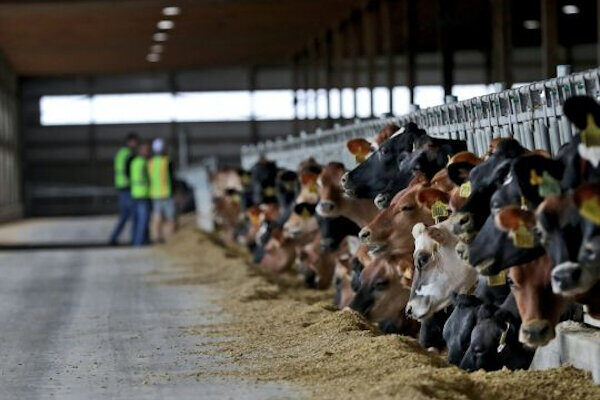Managing Producer Expectations: Seasonal Effects on Milk Components
There is a common business adage that “what gets measured gets managed.” Every day, our nutritionists are digging into your data to identify optimal solutions for your herd. One data point we’re asked about each spring is what to do about decreases in milk component percentages as the days get longer and hotter.
We know that changes in fat and protein percentages in milk follow a consistent trend throughout the year, with both peaking in early winter and reaching their lowest point around July (See figures 1 and 2. It is important to observe that both fat and protein begin to decline as early as March and April – we’ll come back to that shortly. There are several factors that influence milk components including nutrition, stage of lactation, lactation number, health, genetics, and, having the most consistent effect, season. New studies out of Penn State show the trend in component decline follows the increase in daylight exposure as the days get longer in the spring and summer. Remember that March/April timeframe? This coincides with the vernal equinox and the point when daylight hours being to exceed nighttime hours.
Moreover, the variation increases the further herds are from the equator. While the authors are cautious making direct connections on different test groups, they note a similar pattern in European herds, and an opposite pattern in the southern hemisphere, corresponding to the opposite seasonality in those countries.
Given that these patterns are well-established and not easily influenced, how do you navigate this seasonal change? Here are a few tips:
Look for Patterns: Start with component data and establish a seasonal baseline of fat and protein percentages throughout the year. In the U.S., the highest levels will typically be January/February, and the lowest levels around July. Daily and weekly variation is to be expected, but seasonal trends will tend to be very consistent.
Manage Expectations: Profitability on the line, producers may look to their nutrition advisor for answers. It is important that producers understand what levels to expect for their herd and are not chasing an artificial goal or a dramatic increase through nutrition interventions. Have regular conversations with the producer, using the high point as a base to measure how well the cows are holding components.
Formulate and manage for more pressing challenges: If current component percentages fit the farm’s seasonal pattern, changes to rations may result in added cost with little improvement in component levels. Instead, consider near-term challenges like heat stress — Lactating dairy cows are prone to heat stress when the temperature humidity index (THI) rises above 68, which is followed by a drop in milk production follows within 48 hours. Look at TMR Savers and nutritional solutions that help the animal better regulate their body temperature. Don’t forget to talk about good management practices, including air movement, feed timing, feed bunk management, and water availability.
Look at Lighting: Manipulating light for lactating and dry cows has been shown to increase milk production and components, as well as dry matter intake. Research suggests that 16 hours of daylight and 8 hours of darkness is ideal for lactating cows during the spring and summer months, and the exact opposite for dry cows – 8 hours of light and 16 hours of darkness. Consider the economics of changing housing and management, such as housing dry cows in a separate area from the milking cows, and using a light meter to ensure cows are receiving the right amount of light
Season changes impacting components is a well-known phenomenon and though there are limitations on positively influencing this swing, managing producer expectations can help set realistic goals for both the farm and nutritionist.



